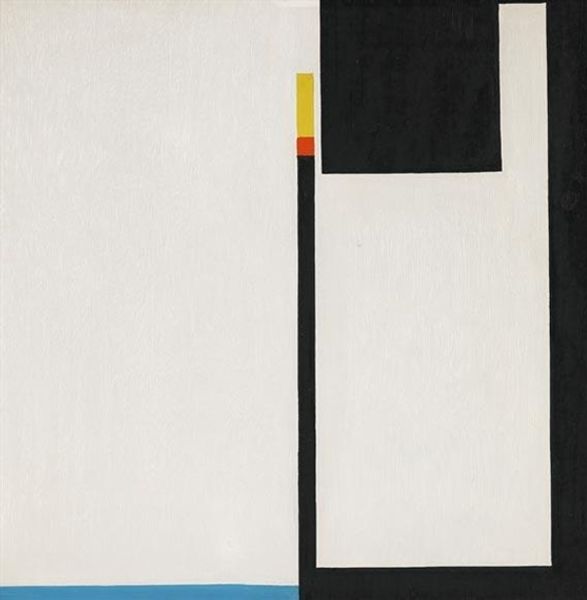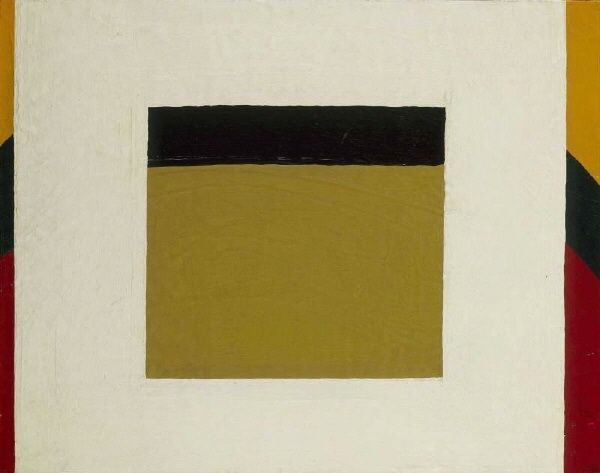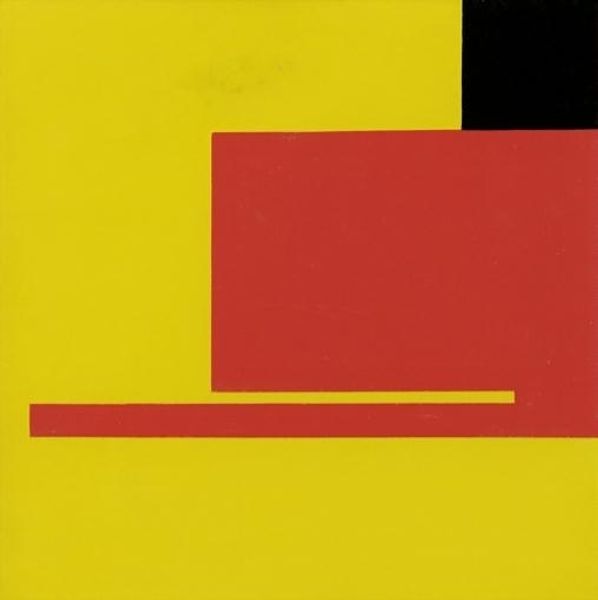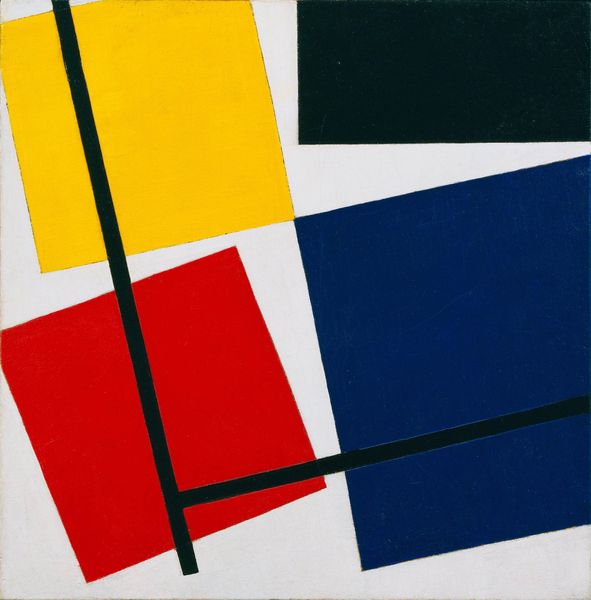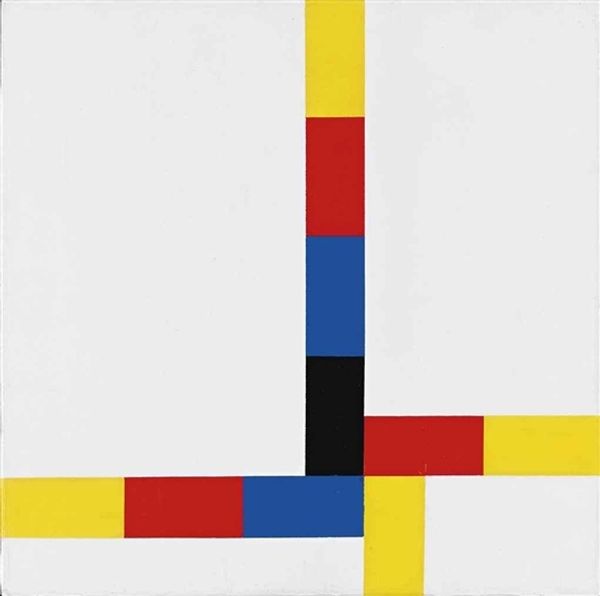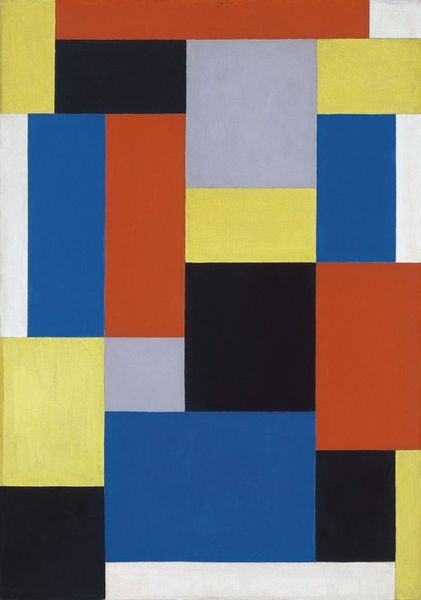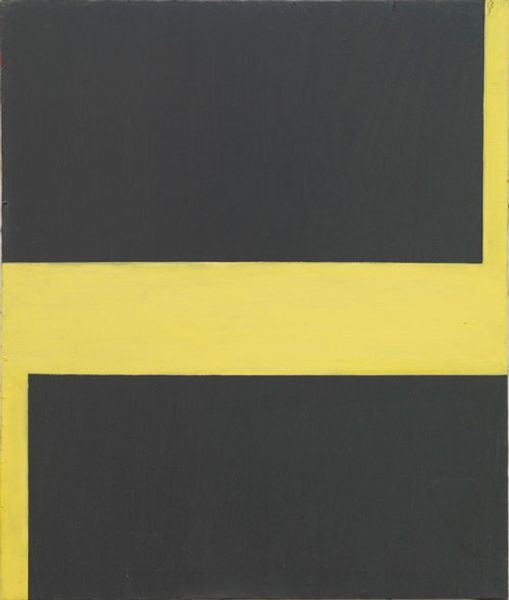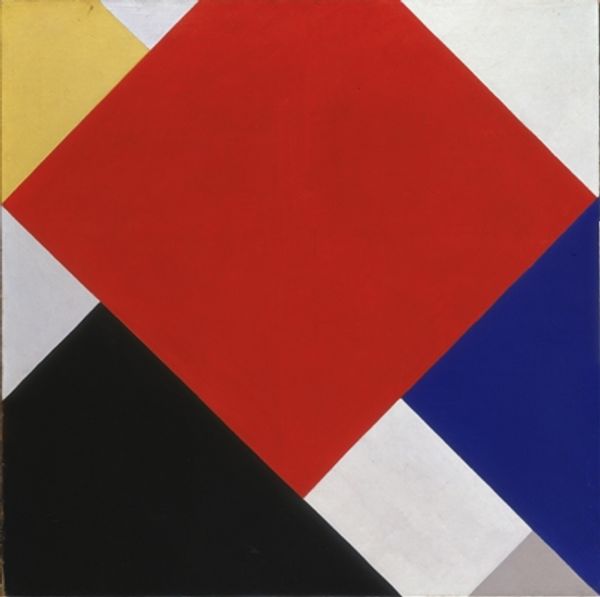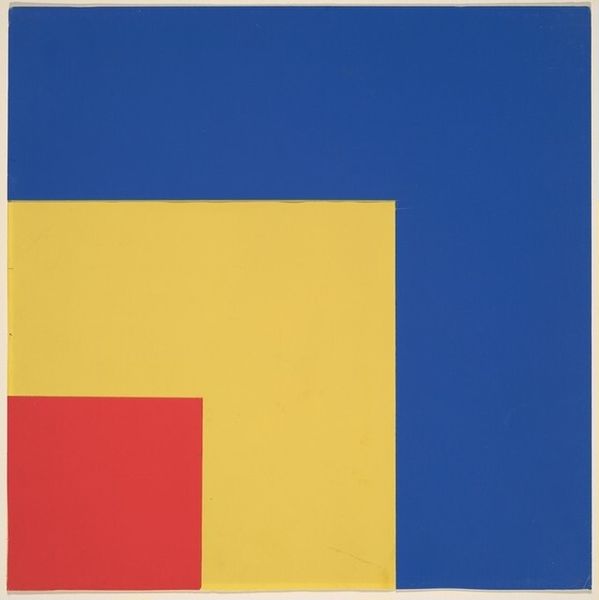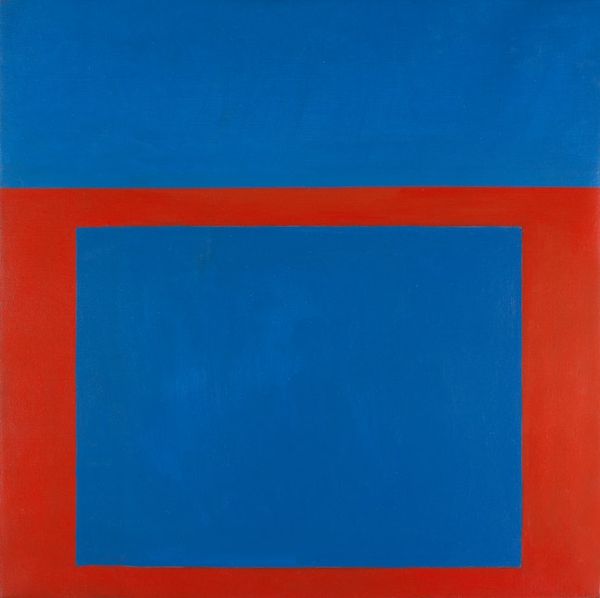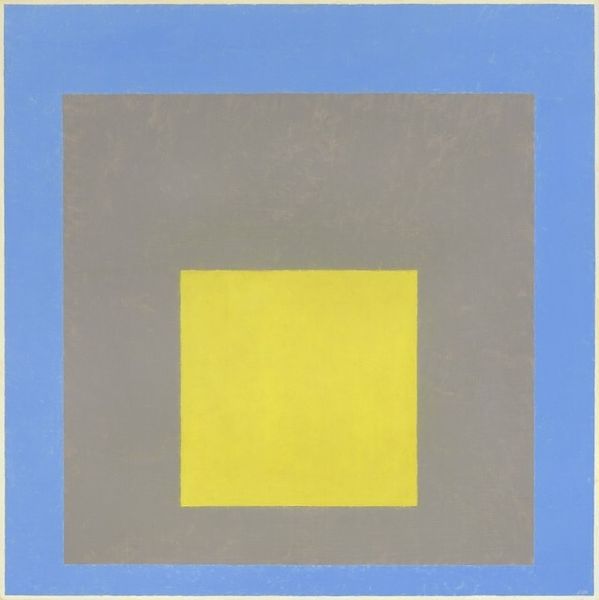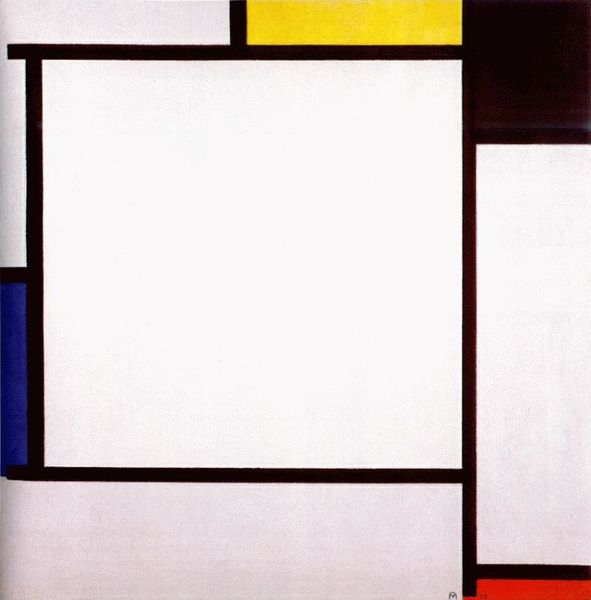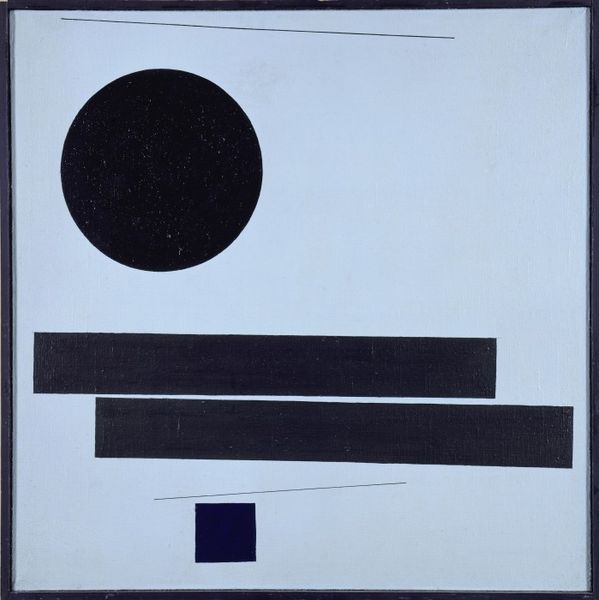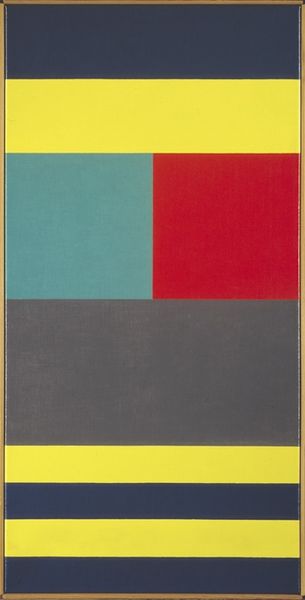
#
pop art-esque
#
geometric composition
#
pop art
#
minimal geometric
#
neo expressionist
#
minimal pattern
#
white focal point
#
pop art-influence
#
geometric form
#
geometric figure
Dimensions: overall: 106.7 x 106.7 cm (42 x 42 in.) framed: 109.5 x 109.5 cm (43 1/8 x 43 1/8 in.)
Copyright: National Gallery of Art: CC0 1.0
Curator: Immediately striking, isn't it? Simple, but assertive. A bold black canvas punctuated by these pure geometric shapes. Editor: It does feel very self-assured, very controlled. Like a visual declaration of order. This is Burgoyne Diller's "First Theme", created in 1964. Curator: Diller's use of these basic geometric forms—a square and two rectangles—against that stark black field feels almost symbolic. Editor: It invites a semiotic reading, doesn't it? The square, perhaps representing stability, juxtaposed with the verticality, the striving of the yellow and blue rectangles. And of course, those are primary colors. Curator: Absolutely. And given Diller's known interest in Neo-Plasticism and the legacy of Mondrian, that focus on primary colours seems almost a nod to utopian ideals through pure abstraction. The period when this piece was produced speaks of a move into clean visual simplicity in opposition to previous trends in the 50’s Editor: I wonder about that particular shade of yellow, though. It's not a happy, sunny yellow, is it? It carries a touch of something else – perhaps caution or even illness; not everything reads positive. In that case, it would alter a direct relationship to primary optimism of Mondrian. Curator: An interesting reading! I would argue that's because this artwork exists beyond pure aesthetic contemplation; it provokes an awareness of art's own formal language. The colours don’t just carry pre-existing symbolic meaning, but create a system, and dialogue on its own terms Editor: I concede that the composition does establish that strong sense of internal rules. It presents not only forms but a visual grammar that is also very satisfying on the eye. A sense of equilibrium, in that seemingly random composition. Curator: In this sense, we can understand Diller to challenge visual assumptions through his art. But in doing so, he reminds us of our own perceptual structures and the inherent symbolic power of images, even simple ones. Editor: Indeed. "First Theme" encapsulates a distinct historical moment of seeking meaning through pared-down, formal means. Very striking. Curator: And perhaps now we understand the ongoing cultural obsession of simple forms, colours, and our ability to assign meaning within the contemporary period.
Comments
No comments
Be the first to comment and join the conversation on the ultimate creative platform.
